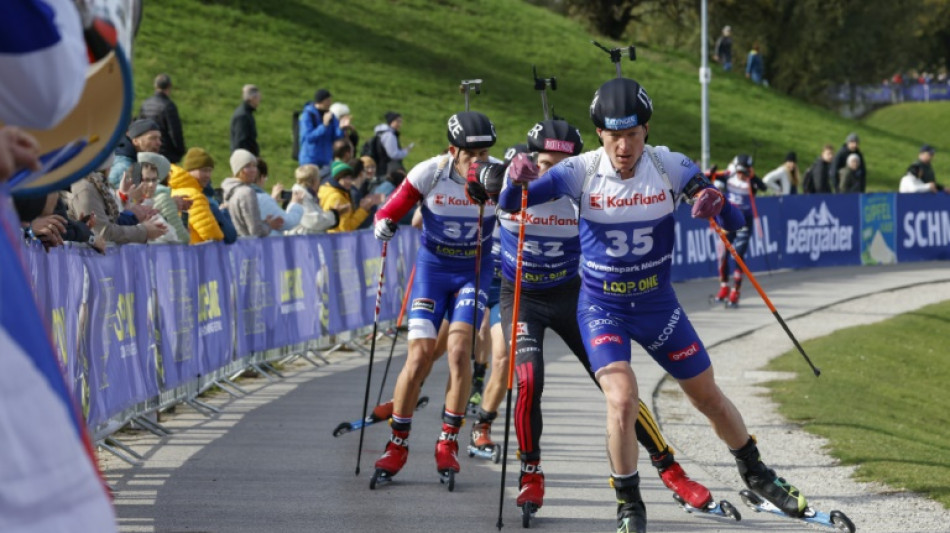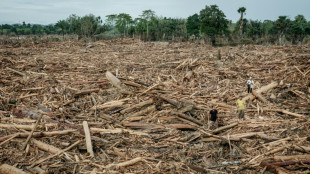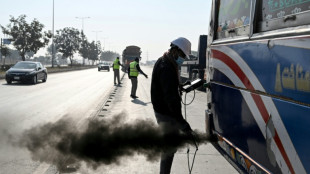

Athletes swap skis for skates in a glimpse of winter sport's future
Many of the world's best biathletes swapped skis for skates at an exhibition event in Munich on the weekend, offering a glimpse into the future of winter sports in a warming world.
Biathlon, the mix of cross-country skiing and target shooting that is one of Scandinavia's most popular winter sports, is one of several disciplines facing a reckoning as climate change and increasingly mild winters pose an existential threat.
Only two weeks after the Munich's Oktoberfest beer festival, which typically signals the end of warmer weather for another year, the Bavarian city held the Loop One festival for the first time on Saturday and Sunday.
Unlike typical biathlon events that take place in freezing conditions against a backdrop of gleaming white snow, the lawns of Munich's Olympic Park were green. The trees are yet to shed their yellow and orange leaves.
But with an estimated 18,000 spectators attending the two-day exhibition event, many in t-shirts, organisers are hoping events like this may help keep the sport -- and others like it -- alive in some capacity.
- 'Bleak future' -
In 2024, the International Ski and Snowboard Federation (FIS) partnered with the World Meteorological Organisation (WMO) to "raise awareness of the bleak future of winter sports and tourism because of climate change".
"Ruined winter vacations and cancelled sports fixtures are – literally – the tip of the iceberg of climate change," WMO Secretary General Celeste Saulo said, announcing the partnership.
Studies have shown that several of the 21 former Winter Olympic host cities may be unable to hold winter sports events in future without a significant reduction in carbon emissions.
Biathlon is a sport rooted in Scandinvian traditions of skiing and hunting.
Carrying rifles on their backs, skiiers make their way around a snow-covered course before stopping to shoot targets, either while standing or lying down.
Each miss requires skiing an additional penalty loop, meaning biathletes need a good grasp of both disciplines to get among the medals.
The modern version of the sport grew out of Norwegian military exercises and is popular in Nordic and Alpine countries, as well as in Germany, France and Italy. It was added to the Olympic programme in 1960.
- 'Tragic but necessary' -
Biathlon formats without snow have existed for decades, but the Munich event was the first organised by the International Biathlon Federation (IBU).
French world champion Lou Jeanmonnot called the Munich event "definitely the biathlon of the future," adding "the winter-summer transition is necessary."
Jeanmonnot admitted that on the skates, she missed "the gentleness, the absence of noise, which I personally love".
"It's tragic that we've come to this, but it's necessary," she said.
Reigning world champion Eric Perrot said: "My passion is skiing, and skiing is the contact with the snow," but he added: "We have to adapt to our environment.
"Otherwise, we'd be running headlong into a wall."
While roller skates may provide an option to keep the sport alive in a warming world, athletes and administrators alike hope biathlon's future as a snow sport does not melt away entirely.
"There aren't many winter sports that can be converted into summer sports, but I think biathlon is one of them," French biathlon boss Stephane Bouthiaux said, but added he hoped a switch to the skates will happen "as late as possible, or never."
N.Coleman--VC







